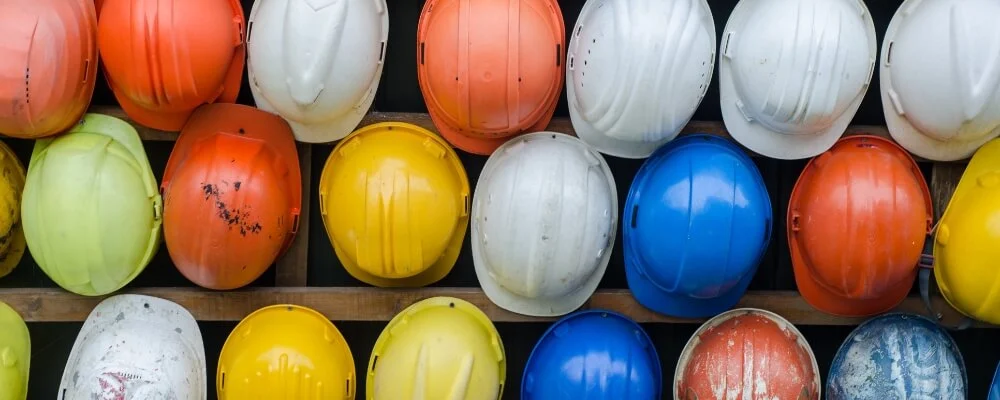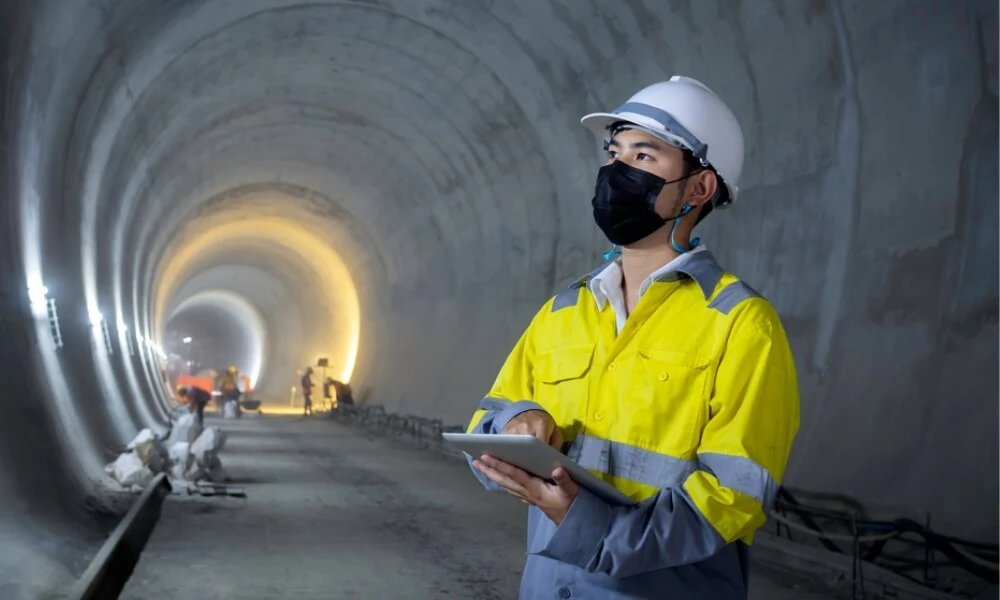Safety has taken on a proactive role in our rapidly evolving technological world like never before. Gone are the days when safety measures solely revolved around reducing harm post-incident. Today, we’re in the age of “Active Safety” – a paradigm that prioritizes preventing accidents before they even occur. But what exactly is active safety? How does it fit into our modern landscapes of work, travel, and everyday life?
Dive into this comprehensive guide as we unpack the concept of active safety, exploring its myriad benefits, diverse applications across sectors, and the cutting-edge components that drive it. Whether you’re a tech enthusiast, a safety-conscious consumer, or someone curious about the future of safety, this blog will illuminate how active safety is reshaping our world and why it matters.
What’s Active Safety? Definition
Active Safety refers to the systems, practices, and measures designed to prevent accidents or incidents from occurring in the first place. Unlike reactive measures that come into play after a hazardous event, active safety mechanisms work continuously to reduce or eliminate the likelihood of adverse events. Imagine driving a car that alerts you when you’re getting too close to an object or warns you when you’re drifting out of your lane—these are classic examples of active safety in action.
The importance of active safety is multi-dimensional:
- Prevention over Cure: By preventing incidents before they occur, active safety measures can significantly reduce the physical, emotional, and financial toll of accidents.
- Confidence Booster: Knowing that there are systems in place to warn or safeguard against potential risks proactively can increase the confidence of workers, drivers, and the general public in the systems they interact with.
- Economic Savings: While there’s an upfront cost associated with implementing active safety measures, the long-term savings—both in terms of reduced damages and potential litigation—can be substantial.
The Difference Between Active Safety and Passive Safety
Understanding active safety becomes clearer when juxtaposed with its counterpart: passive safety.
- Active Safety is about prevention. Its systems and technologies are always “on the lookout,” aiming to avoid or mitigate dangerous situations. Think of it as the vigilant sentry, alert and ready to act before an incident starts.
- On the other hand, Passive Safety is about mitigation and protection once an accident has already occurred. These are the measures designed to reduce the severity of injuries or damages. Using the car analogy again, while active safety might be the warning system that prevents a collision, passive safety is the airbag that deploys when a crash happens, minimizing passenger harm.
In essence, while active safety stops or warns about potential accidents, passive safety steps in to lessen the impact when accidents do occur. Together, they form a holistic approach to ensuring the best possible outcomes in unpredictable and potentially dangerous situations.

Historical Context of Active Safety
To appreciate the full breadth of active safety, it’s essential to look back in time. The evolution of active safety is a testament to humankind’s unyielding drive to better its environment and create safeguards against potential dangers. Across diverse industries, active safety has transformed dramatically, weaving a rich tapestry of innovations and milestones.
Evolution of Safety Measures in Different Industries
- Mining: One of the earliest industries to prioritize safety was mining. The inherent risks of working underground spurred innovations like the Davy lamp in the 1810s. This safety lamp was designed to minimize the risk of igniting methane gas, a common hazard in coal mines.
- Railroads: As railways increased in the 19th century, so did the need for safety. Early signaling systems were developed to prevent collisions, evolving into the sophisticated automated systems we have today.
- Automotive: The 20th century witnessed a boom in personal automobiles, and with it came the challenge of ensuring driver and passenger safety. Early cars lacked even the most basic safety measures. It wasn’t until the 1950s and 60s that seat belts became standard. This period marked the advent of research into active safety systems, leading to innovations like anti-lock braking systems (ABS) in the 1970s.
- Aviation: The aviation industry’s commitment to safety is unparalleled. Early planes were fraught with risks. The introduction of air traffic control in the 1930s, followed by collision-avoidance systems in the latter half of the 20th century, drastically reduced air incidents.
- Workplace: With the rise of the Industrial Revolution came a new set of workplace hazards. Early 20th-century factories were places of high risk. Gradually, regulations were introduced, machinery was refined, and active safety measures, such as emergency stop systems and machine guarding, became commonplace.
Key Milestones in the Development of Active Safety Technologies and Practices
- Seat Belts: Invented in the early 20th century, the three-point seatbelt, patented by Volvo’s Nils Bohlin in 1959, was a significant leap in vehicular safety. It actively reduced the risk of injury in crashes.
- Anti-lock Braking System (ABS): First introduced in the 1970s, ABS prevents wheel lock-up during hard braking, allowing drivers to maintain steering control—a seminal development in active car safety.
- Air Traffic Control: The 1930s saw the introduction of air traffic control towers, which actively coordinated aircraft movements to prevent mid-air collisions.
- Machine Guarding: As industrial machinery became more complex and powerful, machine guarding practices were developed in the 20th century to protect operators from actively contacting moving parts.
- Advanced Driver Assistance Systems (ADAS): In the late 20th and early 21st centuries, ADAS technologies like lane departure warnings, adaptive cruise control, and automatic emergency braking transformed automotive safety.
- Occupational Health and Safety Acts: Various countries established regulations and standards during the 20th century, which mandated active workplace safety measures, marking a significant stride in worker protection.
Each of these milestones represents humanity’s response to the challenges posed by technological and industrial progress. Active safety, in its myriad forms, has always been about staying one step ahead of potential risks, foreseeing danger, and proactively countering it.
As we progress, the boundary between active and passive safety is increasingly blurring, thanks to the advancements in predictive analytics and AI, promising an even safer future.

Applications of Active Safety
Active safety measures have permeated almost every facet of our lives, from our work environments to our daily commutes and even the sanctity of our homes. By constantly anticipating potential risks, these measures ensure a proactive approach to safety across various sectors.
Let’s delve deeper into the applications of active safety across these domains.
1. Occupational Health and Safety
Workplaces, especially those in the industrial, construction, and chemical sectors, are rife with potential hazards. Active safety measures in occupational settings include:
- Machine Guarding: These are protective barriers or devices designed to shield workers from the moving parts of machinery, reducing the risk of physical injury.
- Safety Alarms and Warning Systems: These alert workers to potential dangers, such as releasing toxic gases or imminent machine malfunctions.
- Training and Drills: Regular safety drills, from fire evacuation to electrical safety protocols, actively prepare employees for emergencies.
- Ergonomic Design: By designing workspaces to fit workers’ needs, ergonomic considerations actively prevent repetitive stress injuries and other musculoskeletal issues.
2. Automotive Industry
Modern vehicles come equipped with a myriad of active safety features:
- Anti-lock Brakes (ABS): This system prevents the wheels from locking up during braking, allowing the driver to maintain steering control, especially on slippery surfaces.
- Traction Control: This prevents wheel spin during acceleration by adjusting engine power or applying brake force to specific wheels.
- Lane Departure Warnings and Lane-Keep Assistance: These systems alert the driver if the vehicle begins to move out of its lane and can even take corrective action.
- Adaptive Cruise Control: By monitoring traffic conditions, this feature can automatically adjust a car’s speed to maintain a safe following distance.
3. Aviation
Flying is one of the safest modes of transport, thanks in large part to active safety systems:
- Collision Avoidance Systems: These systems alert pilots to other aircraft nearby and can suggest or even take evasive action.
- Weather Radar: Pilots can adjust their flight paths to ensure safety by scanning for adverse weather conditions.
- Ground Proximity Warning Systems: These alert pilots if they are in danger of flying into the ground, a mountain, or any other terrain.
4. Maritime
The vastness of the oceans poses unique challenges, addressed by specialized active safety measures:
- Radar and Sonar Systems: These detection systems actively monitor the surroundings, helping ships avoid collisions with other vessels or underwater obstacles.
- Electronic Chart Display and Information System (ECDIS): This navigation system provides real-time information, actively aiding captains in safe route planning.
- Automatic Identification Systems (AIS): This tracking system is used on ships and by vessel traffic services for identifying and locating vessels, aiding in active collision avoidance.
5. Home and Daily Life
Our homes might seem like sanctuaries, but they, too, benefit from active safety measures:
- Smoke Detectors: These devices actively monitor for fire signs, alerting residents at the earliest hint of smoke.
- Carbon Monoxide Detectors: Since carbon monoxide is colorless and odorless, these detectors are vital in alerting residents to potentially lethal gas leaks.
- Security Systems: Modern home security systems don’t just sound an alarm after a break-in. Many now detect motion, actively alerting homeowners to potential intruders or even automatically alerting local authorities.
The widespread application of active safety across these domains underscores its centrality in our lives. Whether silently working in the background or jolting us to attention with an alarm, active safety systems are the unsung heroes, often standing between us and potential disaster.
As technology advances, we can only expect these systems to become more sophisticated, offering even greater levels of protection.

Key Components and Technologies of Active Safety
Advancements in technology have revolutionized active safety. These innovations equip systems with the ability to foresee and counteract risks even before humans become aware of them. Understanding the key components and technologies behind active safety provides insight into its workings and increasing effectiveness.
1. Sensors and Detection Systems
These devices continuously monitor the environment, providing essential data that active safety systems rely upon:
- Radar (Radio Detection and Ranging): By emitting radio waves and analyzing reflections, radar systems can detect objects, measure their distance, and determine their speed. Radar is commonly used in maritime and aviation applications and is fundamental in some automotive safety features like adaptive cruise control.
- Lidar (Light Detection and Ranging): Similar to radar but using laser light, lidar can generate detailed 3D maps of an environment. This technology is crucial for developing autonomous vehicles, as it helps them “see” and interpret their surroundings.
- Infrared and Ultrasonic Sensors: Used primarily in automotive and industrial settings, these sensors can detect obstacles, measure distances, and even discern temperature changes.
2. Warning Systems
Once a potential danger is detected, alerting the user is critical. That’s where warning systems come into play:
- Alarms: Audible alerts, ranging from the beep of a reversing truck to the shrill sound of a smoke detector, are designed to capture attention immediately.
- Lights and Visual Alerts: Flashing lights signify potential danger, especially in high-risk environments like construction sites or emergency vehicles. Another example is car dashboard warning lights, indicating issues like low tire pressure or lane departure.
3. Automation and Control Systems
Sometimes, human reaction times are insufficient to prevent an accident. In these instances, automated systems can intervene:
- Automatic Emergency Braking (AEB): Found in many modern cars, AEB systems use sensors to detect an impending collision and automatically apply the brakes if the driver doesn’t react in time.
- Stability Control Systems: These detect and reduce the loss of traction, automatically applying brakes or adjusting engine power to help the driver maintain control.
- Automated Shutdown Systems: In industrial settings, systems can be designed to shut down machinery automatically if a machine malfunctions or a dangerous condition is detected.
4. Training and Education Tools
While technology plays a huge role in active safety, human understanding remains essential:
- Simulation Software: Simulation software is a cornerstone of active safety training, from flight simulators that train pilots to handle emergencies to driving simulators that teach new drivers how to react in hazardous situations.
- Augmented Reality (AR) and Virtual Reality (VR): These technologies immerse users in realistic scenarios, enabling training for dangerous situations without risk.
- Online and On-site Training Modules: With the rise of digital platforms, active safety training can be disseminated more widely, ensuring that workers, drivers, and the general public are informed and prepared.
The synergy of sensors, warning systems, automated controls, and training tools forms the backbone of active safety technologies. As innovations continue to emerge, these components become more integrated, leading to even more advanced and efficient systems prioritizing human safety.

Different Benefits of Active Safety
Active safety systems have ushered in a new safety and risk mitigation era across various sectors with their forward-looking, anticipatory approach. Their integration into our daily lives has brought tangible benefits that have enhanced our well-being and security. Here’s a closer look at the multiple advantages of active safety:
1. Prevention of Accidents and Injuries
- Proactive Response: Unlike passive safety measures, which aim to minimize injury post-accident (like airbags or safety belts), active safety measures prevent accidents from occurring in the first place. For instance, anti-lock brakes can prevent skidding, reducing the crash risk.
- Early Detection: Sensors and warning systems detect potential hazards early, providing timely alerts. For example, smoke detectors can identify fires at their onset, allowing for quicker evacuation and response.
2. Enhanced Confidence and Comfort
- Peace of Mind: Knowing that active safety systems are in place, whether in vehicles, workplaces, or homes, provides individuals with a sense of security and reduces anxiety related to potential risks.
- User-Friendly Interfaces: Many active safety systems are designed with intuitive interfaces, such as visual or audible alerts, making them user-friendly and comprehensible.
3. Economic Benefits
- Reduction in Damage Costs: Active safety systems can save substantial repairs and medical expenses by preventing accidents.
- Lower Insurance Premiums: Many insurance companies offer reduced premiums for vehicles, homes, or workplaces equipped with advanced active safety measures, recognizing the diminished risk they pose.
4. Enhancement of Operational Efficiency
- Optimized Workflows: In industrial settings, active safety systems can integrate with other systems to optimize operations, ensuring that machinery functions within safe parameters and reduces downtime.
- Data Collection and Analysis: Many active safety systems collect data, which can be analyzed to gain insights, improve processes, and further enhance safety protocols.
5. Support in Decision Making
- Real-time Data: Active safety systems often provide real-time feedback. For example, collision avoidance systems give pilots immediate information in aviation, aiding in split-second decision-making.
- Training and Preparedness: Simulation tools and training modules, part of active safety initiatives, equip individuals with the knowledge and experience to make informed decisions in high-risk situations.
6. Promotion of Technological Advancements
- Stimulates Innovation: The demand for more efficient and effective active safety systems drives research and innovation, leading to technological advancements in safety and related fields.
- Integration with Emerging Technologies: Active safety systems are increasingly integrating with AI, machine learning, and IoT, making them smarter and more responsive.
7. Environmental Benefits
- Reduction in Hazardous Incidents: By preventing industrial accidents, active safety measures can reduce the release of toxic substances into the environment.
- Efficient Resource Use: Active safety systems in industries can ensure machinery and processes run efficiently, leading to less wastage and reduced environmental impact.
In essence, the benefits of active safety extend far beyond immediate accident prevention. They ripple outwards, improving our quality of life, bolstering economic prospects, and fostering an environment where safety is paramount. As technology advances, we can anticipate even more refined and effective active safety measures in the future.

Challenges and Limitations of Active Safety
While active safety systems undoubtedly offer numerous advantages, they are not without their challenges and limitations. Recognizing these constraints helps manufacturers and users optimize the effectiveness of these systems and mitigate potential pitfalls.
1. Reliability and False Alarms
- False Positives: Active safety systems, especially those dependent on sensors and detectors, can sometimes trigger false alarms. For instance, a collision avoidance system might activate without imminent threat, leading to unnecessary braking.
- Desensitization: Repeated false alarms can cause users to become desensitized and may lead them to ignore genuine warnings, undermining the primary purpose of the safety system.
2. Over-reliance by Users Leading to Complacency
- Reduced Vigilance: Relying too heavily on active safety systems can lead users to believe they can be less attentive. For example, drivers might pay less attention to the road, trusting the vehicle’s safety features to prevent accidents.
- Skill Erosion: If individuals lean too much on automated systems, their manual skills can diminish. Pilots, for instance, might become overly dependent on automated flying systems, decreasing their hands-on flying skills.
3. Technological Limitations
- Sensor Limitations: Conditions such as fog, heavy rain, or mud can hamper the performance of sensors like radar and lidar, reducing the effectiveness of certain safety systems.
- Software Bugs: As with all tech-dependent systems, software glitches can occur, potentially compromising safety features. This is especially concerning for systems that rely heavily on complex algorithms, like autonomous driving systems.
- Interference: Electromagnetic interference can impact the functioning of some active safety systems, leading to malfunctions or incorrect readings.
4. Costs of Implementation
- High Initial Costs: Integrating advanced active safety systems, especially in sectors like aviation or automotive, can be prohibitively expensive, making them less accessible to certain market segments.
- Maintenance and Upgrades: These systems often require regular and occasional upgrades, further adding to long-term costs.
- Economic Impact: For businesses, the cost of integrating active safety measures might result in increased prices for consumers or reduced profit margins.
While active safety systems hold immense potential and have already saved countless lives, it’s essential to approach them with a comprehensive understanding of their challenges. Addressing these limitations and continually refining the technologies and methodologies involved is critical to maximizing the benefits of active safety while minimizing its drawbacks.
Conclusion
With its proactive approach and technological backbone, the realm of active safety is undeniably shaping the forefront of modern safety measures. As we’ve navigated through its intricacies, from its inception to its multifaceted applications and state-of-the-art components, it becomes clear that active safety isn’t just a fleeting trend—it’s the future.
The emphasis on accident prevention and the tangible benefits and vast applications across industries showcase its transformative potential. While challenges remain, the ongoing innovations promise to further refine and enhance these systems.
As we move forward, individuals, industries, and policymakers alike must embrace and invest in active safety. In doing so, we aren’t just adopting technology but championing a safer, more proactive world for everyone.

